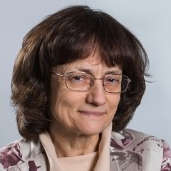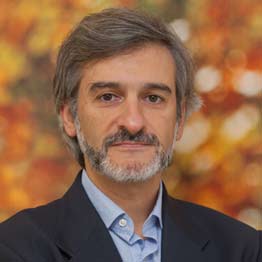A Commemorative Issue in Honor of József Szejtli: Advances in Cyclodextrin Chemistry and Its Applications
A special issue of International Journal of Molecular Sciences (ISSN 1422-0067). This special issue belongs to the section "Materials Science".
Deadline for manuscript submissions: 30 June 2024 | Viewed by 693
Special Issue Editors
Interests: cyclodextrin polymers; environmental applications; analysis of cyclodextrins and complexes
Interests: cyclodextrins in drug delivery; cyclodextrins as active ingredients; applications in food; cosmetics
Special Issues, Collections and Topics in MDPI journals
2. SUMBET (Supramolecular Materials for Biomedical and Environmental Technologies), Universidad de Navarra, C/ Irunlarrea 1, 31080 Pamplona, Spain
3. BIOMA (Instituto de Biodiversidad y Medioambiente), Universidad de Navarra, C/ Irunlarrea 1, 31080 Pamplona, Spain
Interests: supramolecular chemistry; cyclodextrins; colloids; polymers; hydrogels; nanocomposites; scattering methods
Special Issues, Collections and Topics in MDPI journals
Special Issue Information
Dear Colleagues,
The papers in this Special Issue are derived from works presented at the 7th European Cyclodextrin Conference on 5–8 September 2023 in Budapest. Manuscripts in various fields of cyclodextrin chemistry and applications are its scope, including the latest results in cyclodextrin production and enzymology, synthesis and the characterization of novel cyclodextrin derivatives, modern tools for studying complexation, nanotechnology, self-assembling systems, drug delivery, gene/RNA delivery, therapeutic and diagnostic applications of pure cyclodextrins and their complexes, uses in food, cosmetic and other industries, as well as environmental technologies.
This Special Issue is dedicated to Professor József Szejtli on the 90th anniversary of his birth in 1933. Professor Szejtli played a fundamental role in developing cyclodextrins by devoting his life to these cyclic carbohydrates. Professor Szejtli is internationally recognized for his outstanding contributions to various fields in cyclodextrin science. He is often mentioned as the “Godfather of Cyclodextrins.” The EuroCD_2023 conference follows the traditions started by Professor Szejtli in 1981: the first International Cyclodextrin Symposium in Budapest.
The International Journal of Molecular Sciences is an international, peer-reviewed, open-access journal providing an advanced forum for biochemistry, molecular and cell biology, molecular biophysics, molecular medicine, and all aspects of molecular research in chemistry. It has an impact factor of 6.208 and is ranked JCR - Q1 in Biochemistry & Molecular Biology. IJMS has offered a special publication fee: a 450 CHF discount for all the participants of the EuroCD2023 conference.
Manuscripts will be accepted from 1st August to 30th November 2023.
Dr. Éva Fenyvesi
Dr. Lajos Szente
Prof. Dr. Gustavo Gonzalez-Gaitano
Guest Editors
Manuscript Submission Information
Manuscripts should be submitted online at www.mdpi.com by registering and logging in to this website. Once you are registered, click here to go to the submission form. Manuscripts can be submitted until the deadline. All submissions that pass pre-check are peer-reviewed. Accepted papers will be published continuously in the journal (as soon as accepted) and will be listed together on the special issue website. Research articles, review articles as well as short communications are invited. For planned papers, a title and short abstract (about 100 words) can be sent to the Editorial Office for announcement on this website.
Submitted manuscripts should not have been published previously, nor be under consideration for publication elsewhere (except conference proceedings papers). All manuscripts are thoroughly refereed through a single-blind peer-review process. A guide for authors and other relevant information for submission of manuscripts is available on the Instructions for Authors page. International Journal of Molecular Sciences is an international peer-reviewed open access semimonthly journal published by MDPI.
Please visit the Instructions for Authors page before submitting a manuscript. There is an Article Processing Charge (APC) for publication in this open access journal. For details about the APC please see here. Submitted papers should be well formatted and use good English. Authors may use MDPI's English editing service prior to publication or during author revisions.








